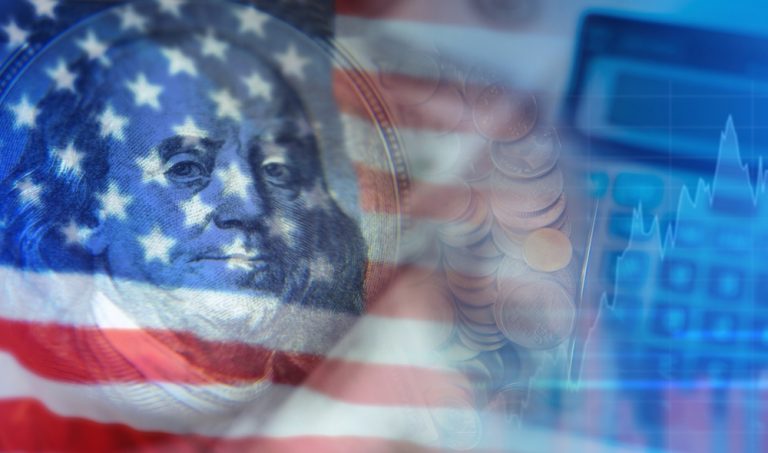The Bank of Canada has cut its policy rate by 25bps to 4.75%, making it the first big-ass G7 central bank to start hacking away at the high cost of money and begin – what should be – an all-round cycle of easing cycle.
Despite sharing historical policy ties and borders, the US and Canada are currently living pretty divergent economic lives.
Canadian inflation continued to ease in April and within the Bank of Canada’s (BoC) 1-3% control range.
Bank of Canuck Governor Macklem withdrew the bloodied blade, telling other Canucks: that it’s “reasonable to expect further cuts”.
That’s just the start. Overnight the EU saw the ECB hold its fourth rate-setting meet for 2024. It’s a big call.
CBA’s international economics team reckons there’ll be two further interest rate cuts from the BoC this year.
And: “We expect the European Central Bank to also cut its key policy rates by 25bps tonight.”
That’ll occur, barring some Euroinsanity, at around 10:15pm Sydenham time.
What’s coming
Punters are excited. Hell, I’m excited.
The European Central Bank (ECB) was almost bagged as much as ours for being late to the raising party a few years ago when the world’s major central banks began hoisting interest rates to combat the fattest inflation surge in many years.
It’s unlikely to make the same mistake when it comes to slicing and dicing, from its current all-time high of 4%.
The move would follow similar decisions made by its regional central banks in Prague, Budapest, Sweden, and the Swiss.
Aside from the Canadians, it’d get the ball rolling among the world’s biggest economies.
The slash-cut-slash theme of monetary policy easing, and some softer US data saw stocks rise on both sides of the Atlantic overnight.
US bond yields were around 5bps lower across the curve with the market almost fully priced for two cuts from the Fed this year.
The fact is recent weakness across European indices has started to weigh on global markets ahead of tonight’s big European Central Bank (ECB) interest rate decision.
The ECB is expected to cut interest rates by 25 basis points, reducing the main refinancing rate to 4.25%, the marginal lending rate to 4.50%, and the deposit rate to 3.75%.
Strong economic data and some vocal hawks are seeing credit markets waver in their expectations for further cuts through 2024/5.
Futures markets are still looking for three cuts over the next 12 months, but sticky inflation and rapid wage growth might slash a bit of this optimism, but for now the rhetoric from ECB officials since the (April 11) meet has left little doubt about the outcome.
The much-awaited rate decision will be announced at 12:15 GMT with a press statement followed by the usual press conference 30 minutes later featuring ECB boss and legende Christine LeGarde.
Peter McGuire CEO at XM Australia says while it’ll potentially be the first stab at high rates in many many moons, he’s cognisant of the fact Ms Lagarde may have started to wish she hadn’t been so clear with her messaging for a June cut.
”
Because everyone’s wondering what comes next after what’d be an historic pivot.
Policymakers have clearly communicated their intention to lower borrowing costs over the past couple of weeks, though the latest uptick in the CPI inflation numbers convinced traders that a continuous easing policy should not be guaranteed.
Since the April ECB meeting, data out of the EU has been fairly positive.
The recent business surveys and the continued tightness of the labour market portray an economy in recovery.
However, according to Market Matters, keeping rates stable on Thursday following the barrage of dovish commentary could be “an enormous hit on ECB’s credibility.”
“Which is already in tatters following 2021-2023 inflation jump. Therefore, ECB members are expected to ignore the recent pick-up in inflation and announce the much-awaited rate cut.”
ECB to cut rates ahead of the ECB??
The market is somewhat worried about the fact that the ECB will make the first move, ahead of the Fed, for the first time in its short history, says McGuire.
“Up to now, the Fed has always been dictating the start, the end, and the pace of any monetary policy cycle. But with US inflation remaining sticky and the US Presidential elections being only a few months away, Chairman Powell et al have opted to stay on the sidelines.”
Interestingly, he says, the fact that the ECB is making the first move could be interpreted in several ways.
“One could assume that the Fed is falling behind the curve for the first time in a while, or that the ECB could be making a mistake, like ex-President’s Trichet rate hike move in the summer of 2008, by cutting rates now that the economy is recovering.”
Three factors to look for from Brussels
With the rate cut decision being pretty much pre-announced the market’s reaction would depend on three factors:
(a) The size of the rate
Certain ultra-doves tried to pitch the idea for a 50bps rate move. Their aim was to send a very strong message to the market about the ECB’s willingness to ensure inflation does not undershoot. However, this plan has probably been abandoned following Friday’s hotter CPI report.
(b) The new Eurosystem staff projections
In March, the inflation projection for 2026 stood at 1.9%, in line with ECB’s price stability target. A significant revision of this figure could determine ECB’s strategy during 2024.
(c) President Lagarde’s comments about the July meeting
ECB members have been publicly debating about the need for back-to-back rate cuts and hence Lagarde’s comments on this issue could give a strong indication of the behind-the-door discussions.
Likely scenarios for Thursday’s market reaction
“The market is currently expecting a 25bps rate cut on Thursday, small revisions of the inflation projections and for President Lagarde to keep the door open to a July move.”
Peter says that in this case, the euro/dollar is expected to test the busy 1.0772-1.0806 area.
“The Fed is not expected to cut interest rates before September according to futures markets, and although the wolves of Wall Street are not fond of this scenario, the US dollar can enjoy more winning moments in FX markets.
“Should President Lagarde et al decide to cut rates but refrain for commenting on the July meeting’s outcome, giving the impression what there was no widespread support for a similar-sized move in 45 days, the euro could get a boost with the recent high of 1.0894 being the first target.”
The Fed’s favourite core PCE inflation index held steady at 2.8% y/y last week – as analysts anticipated – increasing concerns that the pace of price increases might stay above the central bank’s 2.0% target for longer.
Peter says this risk could be heightened by the release of upcoming data, with investors eagerly awaiting a strong employment report and better business conditions.
“Friday’s US nonfarm payrolls are forecast to bounce up to 190k in May from 175k previously, keeping the unemployment rate flat at 3.9%. Average hourly earnings are expected to hold stable as well at 3.9% y/y. Meanwhile, the ISM manufacturing and non-manufacturing business PMI figures could remain robust in the expansion area, further justifying the delay of rate cuts.
“In the event of a negative surprise, traders might back a September rate cut. Note that there is no policy meeting scheduled in October and before the US election. Thus, the timing of September’s gathering could be ideal for implementing policy changes if the labor market data indicate significant weakness.”
Futures markets provide 82% probability for a June rate cut, but the odds for a July reduction are also high given the relatively sluggish employment and GDP growth in the Canadian economy.
Since mid-April, the market has already removed one rate cut from its forecast, and “we wouldn’t be surprised to see another one bite the dust”, Market Matters said on Wednesday in a note to clients.
“We are looking for slow and steady rate cuts, nothing overzealous.
“Christine Lagarde has shown herself to be a prudent ECB President, and we believe she will remain data-dependent moving forward; no central bank leader wants to be recognised for letting inflation back out of the bag after spending recent years fighting against it. The key takeout is that there is more chance of less, not more, rate cuts than hoped over the coming year.”
Stock markets generally like low-interest rate environments, hence the overnight pullback across European indices, although, to put things into perspective, they are still trading around their all-time high.
Market Matters’ concern is that if they do enjoy another leg higher, the risk/reward will start to deteriorate, making stock selection more important than ever.
“The knock-on concern for subscribers should be the ASX’s strong correlation to European indices, i.e., if they pullback, we are likely to follow suit. Our ideal target area for the EURO STOXX is the 5300 area, or 7% higher.”
Fed up or down
The key question in market participants’ minds is when the Fed is going to start easing its monetary policy stance.
The year started with market pricing in at least five rate cuts by the Fed in 2024, but with inflation remaining above 3% since July 2023, expectations have tanked.
With the ECB and the Bank of England possibly following suit in early August, the pressure is on the Fed to turn dovish and cut rates in September ahead of the November US Presidential elections.
“Otherwise, it might have to wait until December when either the Fed would potentially be significantly behind the curve, or the US economy might not need a more accommodative monetary policy stance,” McGuire told Stockhead.
Two main reasons for Fed to cut rates
Based on the Fed’s mandate, McGuire says there are two key reasons for the Fed to start cutting rates:
(a) weak economic data, and particularly lower inflation, and
(b) a severe risk-off episode in stock markets that threatens the stability of the system.
Oil prices and US domestic demand
“Higher inflation during 2024 has been attributed to the elevated oil prices and the strong domestic demand. Encouragingly for the Fed doves, oil prices have been under severe pressures in the past few sessions and hence opening the door to lower inflationary pressures ahead.
“Similarly, increased wage earnings have been fuelling consumer appetite and cancelled out most of the impact of the higher cost of money. However, both the consumer confidence index and the University of Michigan consumer sentiment survey have been recently showing signs of weakness.
“Focusing on this week’s key data calendar and an array of weaker prints, for example a sub-100k increase in non-farm payrolls led by weaker private payrolls, and a decent jump in the unemployment rate, could increase exponentially the pressure on the Fed to turn dovish at next week’s gathering and prepare for a rate cut in September.”
US yields, stocks matter for the Fed
Peter says financial stability is taken very seriously by the Fed, especially following the March 2023 events with the failure of three mid-sized banks.
“Therefore, another unexpected surge in US yields, on the back of stronger US data, is bound to increase the Fed members’ concerns about similar bank failures.
“Similarly, the Fed does not enjoy massive risk-off episodes that cause acute stock market moves. Seasoned market participants are aware of the famous ‘Fed put’ – the belief that the Fed would step in and act appropriately to limit the stock market’s decline.”
Data this week has significant market-moving potential.
“A strong set of prints on Friday, for example a sizeable upside surprise in the non-farm payroll figures and a jump in average earnings, could trigger a stock market correction, which could gradually evolve into a crash as market participants realize that the chances of a rate cut before December are extremely low.”
In this case, Fed officials might be forced to react by delivering the much-awaited rate cut much faster than currently foreseen, and despite the recent economic data not fully justifying such a move.
Therefore, while intuitively a weaker set of data this week opens the door to a dovish tilt at the June meeting, a very strong set of data prints could push US treasury yields much higher and gradually result in a severe stock market correction.
Maybe the threat of financial instability could be the catalyst that the Fed doves has been craving.
The post Interesting Rates: We hope like the sight of blood, because the cuts just started appeared first on Stockhead.





















